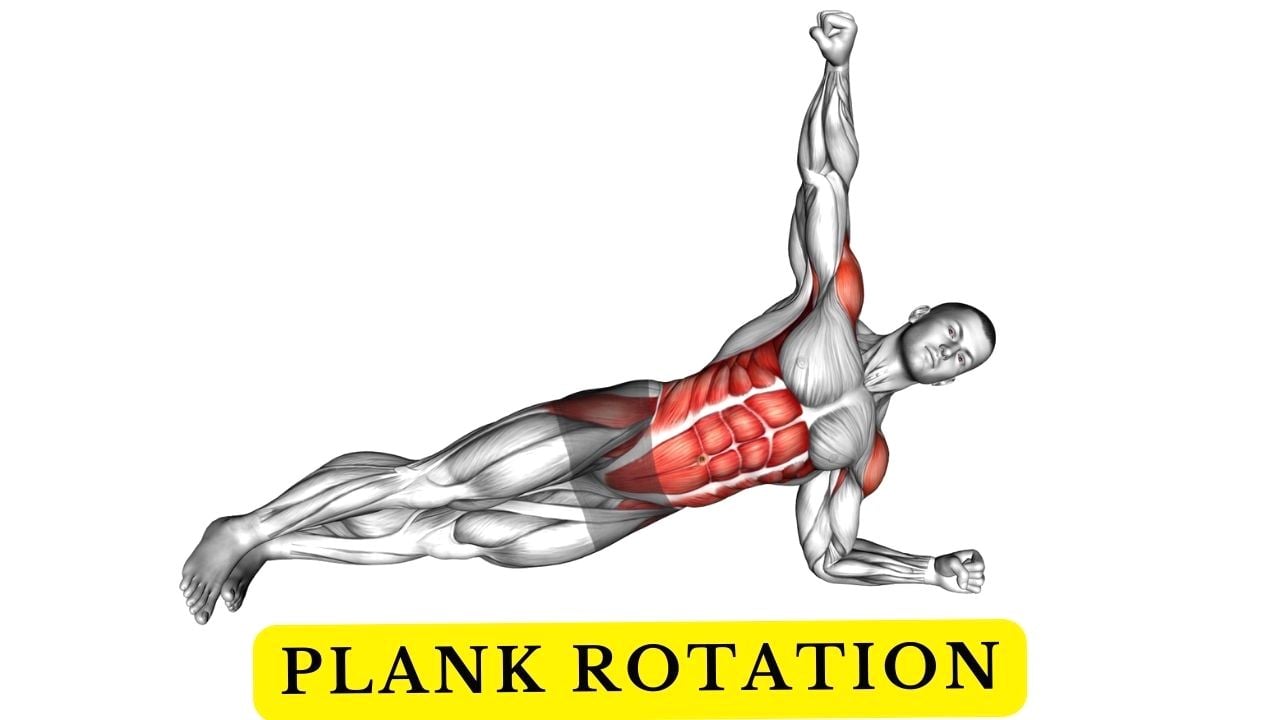Plank rotation is one of the best variations of the front plank, which adds rotational movement. It is also known as the plank twist.
The rotation offers all the core-strengthening benefits of a regular plank, along with the added benefits of oblique, lower back, and transverse abdominis. It also improves the flexibility and mobility of your spine and hip flexors.
Because it works a lot of muscle groups at once, this exercise can help you burn more calories.

Plank Rotation Muscles Worked
- Primary Muscles Worked: Rectus Abdominis and Obliques
- Secondary Muscles Worked: Erector Spinae and Deltoids
- Stabilizing Muscles: Transverse Abdominis, Glutes, Quadratus Lumborum, Serratus Anterior and Latissimus Dorsi
How to Do Plank Rotation
- Get into a push-up position with your arms straight and shoulder-width apart.
- Your feet should be wider than hip distance.
- Keep your body in a straight line from head to heels. No saggy hips or piked-up butts allowed.
- Shift your weight onto your left hand.
- Now lift your right arm towards the ceiling. Reach for the stars! Or, you know, your ceiling.
- Stop the movement once both arms form a straight line, creating a “T” with your body.
- Now, do the same thing, but lift your left arm this time. OR you can also complete reps on a single side before switching to the next side.
Tips and Techniques
- Keep your body in a straight line from head to heels. No sagging hips or raised butts.
- Ensure your elbow is directly under your shoulder to provide a stable support base.
- As you rotate, follow your hand with your eyes. It helps with balance and proper form.
- It’s better to do 5 perfect rotations than 20 sloppy ones.
- If you’re a beginner or find the exercise too challenging, modify it by placing your bottom knee on the ground or reducing the range of motion.
- Once you’ve mastered the basic plank rotation, add variations like holding a weight or using a stability ball.

Manish is a NASM-certified fitness and nutrition coach with over 10 years of experience in weight lifting and fat loss fitness coaching. He specializes in gym-based training and has a lot of knowledge about exercise, lifting technique, biomechanics, and more.
Through “Fit Life Regime,” he generously shares the insights he’s gained over a decade in the field. His goal is to equip others with the knowledge to start their own fitness journey.
